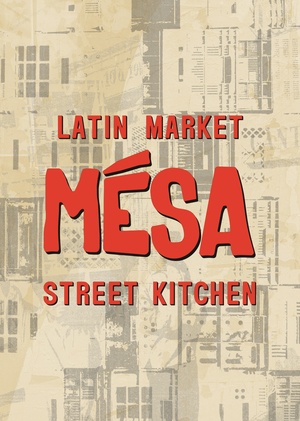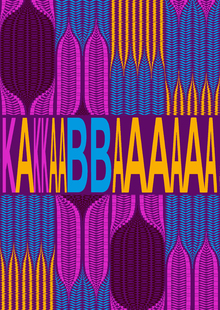
«Projector» magazine. Issue #31
The issue was created in partnership with Moscow Design Museum and Designmuseum Danmark. It is timed to the opening of the exhibition «Legends of Danish Design» at the Pushkin State Museum of Fine Arts.

The historical chapter is introduced by the articles of Alexandra Sankova (Moscow Design Museum Director), Anne-Louise Sommer (Designmuseum Danmark Director), and the invited editor Pavel Ulyanov, the author of almost every text in Chapter One. Our museum partners set the unhurried pace of looking through these pages.

Pavel Ulianov: «Without expecting it by himself, Kaare Klint started off a new era of Danish furniture design. Instead of radically new shapes and constructions, occupying the minds of his European contemporaries, Klint re-considered the existing heritage in the art of furniture-making, and offered its natural step-by-step evolution».
Pavel Ulianov: «Arne Jacobsen was one of those modernists who were creating not just architecture but entire environment which required new substantive design for every project. Jacobsen alwys aimed to create a gesamtkunstwerk, considering himself not a designer but an architect. However, he also made over 300 industrial design objects in his lifetime».
Pavel Ulianov: «Finn Juhl, an extraordinary self-learner, was same far from both contemporary design school made by Kaare Klint’s associates and students, and the craft traditions in Danish furniture making. He chose the path of intuitive aesthetic form making, thus discovering yet another side of Danish design».
Pavel Ulianov: «Wanscher shared Klint’s interest in historical items, especially Antique, Egyptian, English Baroque, and folk style furniture. We may say he followed Klint’s path, polishing the master’s works. Wanscher added his own aristocratic touch of sophisticatedly outlined details to Klint’s functionality and sense of proportion. He believed that natural materials don’t lose their noble look and convey the spirit of classics even on conditions of machine production. In his job, he focused on bourgeois preferences of middle class, being concerned that rosewood items, same as jewellery, would always find their customer».
Pavel Ulianov: «1914 introduced the furniture-making school of Danish modernism to Wegner and Mogensen, the two extraordinarily well-known surnames in the furure. Both born in April eleven days apart, they would become classmates, friends, colleagues, but live drastically different lives. Hans Wegner would outlive his peer by 35 years, create over 500 furniture masterpieces, get almost every possible design award, and become the most titled designer in Denmark. Not so much award-winning Børge Mogensen would provide every Danish home with his furniture in the 1960s, and Danes would call him the most social designer, who’d increased the living standards all over the country».
Pavel Ulianov: «Hans Wegner offered young Kjaerholm the position of an assistent in his own bureau, with an opportunity to work after classes. Having started at the studio, Poul Kjaerholm encountered international furniture design: Gerrit Rietveld, Bauhaus and especially Mies van der Rohe, Charles and Ray Eames. Encouraged by the new knowledge, Kjaerholm decided not to use wood in mass production in favor of industrial materials».
Olga Ryabukhina: «Already in her old age, Grete completely refused to remanufacture her objects. „We talked about it many times with no result — she didn’t want to leave anything after herself“, says Bernt Petersen, designer, Greta’s student and Mobilia magazine colleague, in the interview for the Danish newspaper Berlingske. After much persuasion, she finally agreed to donate her sketches to Designmuseum Denmark. At Jalk’s initiative, a special fund was established by Danmarks Designskole, where she used to study and then work. The fund ensured that a part of the profits from the sales of her art would go towards gifted students of the school».
Anna Kozhara: «Verner Panton, the author of the very first in history chair of solid plastic, was one of the brightest (both literally and idiomatically) designers in the XX century. His futurist style combined the expression of saturated colors and the shape plasticity, while his passion to using the latest materials and technologies gave limitless opportunities to experiment».
Boris Berlin: «We all kind of stand on each other’s shoulders. For this, you shouldn’t weigh too much, not to push the shoulders you’re standing on. Anything we bring in on our own makes us weigh less and pulls us up. There’s nothing revolutionary about it. No matter how revolutionary Mies van der Rohe was, his Barcelona chair „comes“ from an Egyptian stool. He just transferred it into another material — and from one epoch to another. I guess we all „translate“ items into a modern language, because everything has already been said. But if we don’t, the „said“ will disappear together with an extinct language. This is why books should be translated, everything else should be translated!»
Cecile Mantz: «It seems to be my duty to know my history, and I’m privileged to have been born in this kind of environment: little Denmark is design-soaked. Everything here has a touch of design: nature, a bus stop, a bike in a kindergarten, a shopping bag, furniture, household items etc.»
Kasper Salto: «I started as an apprentice at a woodwork studio, we made den furniture. This is when I started thinking of my own projects, my own design. I liked the idea of quality and multifunctional items for a wide range of customers. My first independent project was Running chair, which later got five international awards in design. This is a folding-chair, and twenty years later it’s still being made».
Lars Larsen: «I see myself as a businessman and scientist rather than an artist. As for me, design is alchemy and evolution. This is a mixture of proper ingredients for a good purpose, survival of the worthiest, deep understanding of the brands we work with, and loads of love and time spent on finding a perfect solution for our customers».
Simon Legald: «I always start off with driving my attention to the function and archetype of the product, and then I move on to something new but recognizable. I sometimes can take material as a starting point; sometimes — a product itself. This is the most natural way to me».



